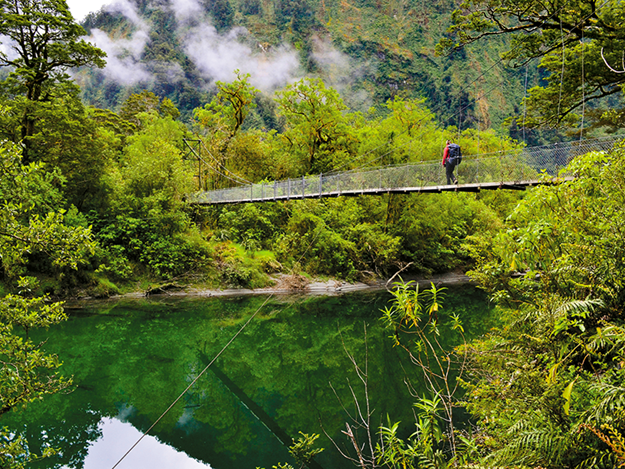 |
Milford Track in Fiordland |
New Zealand has many spectacular walkways and tracks providing access to unique wilderness areas and virgin forests.
Energetic hikers can discover glacier-carved valleys and traverse mountain passes, while more sedate day-walkers can explore golden beaches, bush walks and other sites of scenic, historic and cultural interest.
About one third of NewZealand’s sparsely populated land has been set aside in national parks or reserves for the enjoyment of the public and eco-tourists. While opportunities for exploration exist all over the country, 10 destinations are recognised as significant and have been designated ‘Great Walks’ by DOC.
Apart from the coastal Abel Tasman track in the north of the South Island, the tracks are in high country or mountain areas. Ranging in duration from two to six days, they cover a variety of landscapes on safe, well maintained pathways.
All tracks offer guided tours, for which bookings are essential. Accommodation is generally in basic huts or lodges, but some guided talks offer luxury options. The high season starts in October and lasts until April.
SOUTH ISLAND GREAT WALKS:
Six of New Zealand’s Great Walks are in the South Island; a seventh is further south on Stewart Island.
MILFORD TRACK
The Milford Track in Fiordland is our largest national park and our most famous. Visitors spend four days/three nights following historic Maori routes through a dramatic landscape of forest-covered valleys, mountains and steep fiords from Lake Te Anau to Milford Sound. For this much demanded route, bookings are necessary well in advance, for both independent and guided walks.
ROUTEBURN TRACK
The Routeburn Track, another famous South Island walk, has some of the most diverse scenery: forests, alpine flora, lakes, several waterfalls and panoramic views. The three-day trek covers 39km.
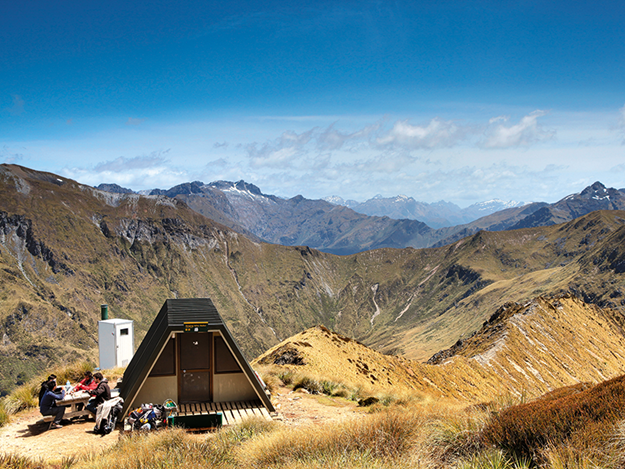 |
The Keplar Track |
The Kepler Track follows a loop that begins and ends at the Fiordland National Park Visitor Centre in Te Anau. It takes four days and traverses lakeside forest and open tussock grasslands, with one day spent walking along the mountain tops above the bush line.
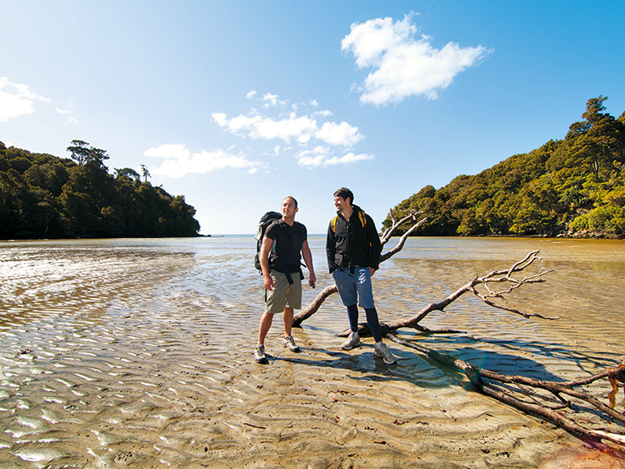 |
On the Rakiura Track |
RAKIURA TRACK
Wilderness explorers wanting to experience the ‘end of the earth’ head for Stewart Island, our southernmost and least populated island. The Rakiura Track has the most birdlife and least predictable weather and conditions, but planked walkways keep feet dry and ensure the three-day walk is possible year-round. It has gentle gradients – never more than 300 metres above sea level – and two huts provide accommodation.
HEAPHY TRACK
The Heaphy Track, in the northwestern corner of the South Island, has undemanding gradients over 80km. The walk takes about five days. The track is accessible year round, but winter snows can make the higher sections chilly. Attractions on the Heaphy Track include the nikau palm-lined beach at its western end, red tussock downs, lush beech forests and fields of alpine herbs.
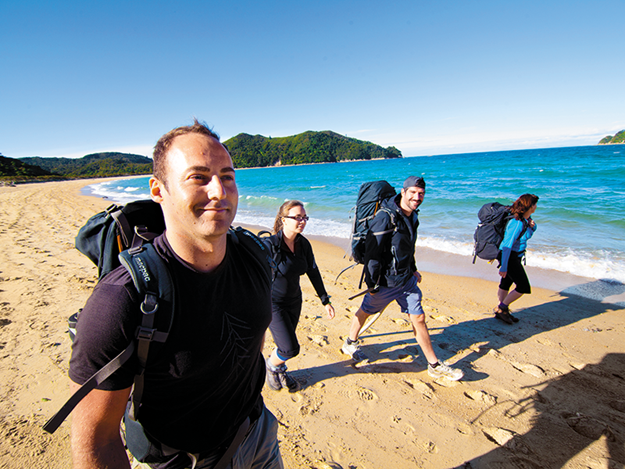 |
Abel-Tasman |
ABEL TASMAN COASTAL TRACK
The Abel Tasman Coastal Track only requires light walking shoes for the 50km route lined with golden beaches. Along the way, five huts and 21 campsites offer accommodation, but transport has to be arranged from one end or the other.
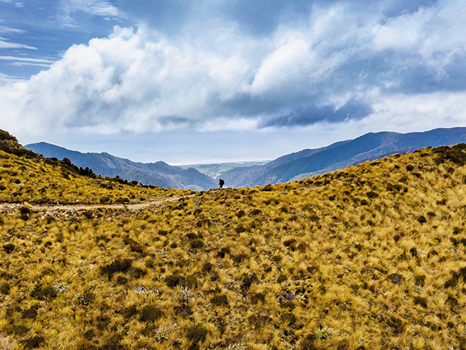 |
Paparoa Track |
THE PAPAROA TRACK
Now open for walkers and mountain bikers, the South Island’s Paparoa Track is NewZealand’s 10th Great Walk. The trail, in the Paparoa National Park on the rugged north-western coast, traverses the Paparoa Range, revealing spectacular limestone landscapes, verdant rainforest and astonishing views. The track travels from Blackball to Punakaiki and includes parts of the existing Croesus and Pororari River tracks. The 55km trail is of great significance to locals; it was created as a memorial to the 29 miners who lost their lives in the 2010 explosion at the Pike River Mine. The national park has been extended by 3971 hectares to include the Pike River area.
NORTH ISLAND GREAT WALKS:
Three Great Walks are in the North Island: Tongariro Northern Circuit, Lake Waikaremoana Track and Whanganui Journey. Each offers a distinctive landscape and challenges for energetic walkers.
TONGARIRO NORTHERN CIRCUIT
The Tongariro Northern Circuit is a loop track of three to four days, starting and finishing at the foot of Mount Ruapehu. Few places equal the drama of this active volcanic region with its lava formations, tussock grassland, fumaroles and geysers, and emerald green mineral lakes – the setting for the scenes in Peter Jackson’s The Lord of the Rings trilogy. Altitude and climatic conditions mean the Tongariro circuit is best walked from late November to March. The Tongariro Crossing – one section of the circuit – is one of New Zealand’s most renowned day walks.
LAKE WAIKAREMOANA TRACK
Lake Waikaremoana is situated east of the central volcanic plateau, in one of the North Island’s most remote regions. The 46km track encircles the lake, providing a four to five-day walk. Apart from one day climbing a steep bluff, the track follows a leisurely path through rainforest.
WHANGANUI JOURNEY
Included as a ‘Great Walk’, the Whanganui Journey is more correctly a 145km kayak or canoe journey down the Whanganui River. Beginning in Taumarunui, this journey takes about five days to complete and provides an early New Zealand history experience. For hundreds of years the Whanganui River was an important route for Maori; later, in early European settlement days, it became a steamboat highway. The winding river and surrounding lowland forest are now a national park.
For further information see doc.govt.nz
Walker Information
Most walking tracks are remote and facilities at the 900 huts maintained by DOC are basic, so walkers need to equip themselves with adequate food and clothing. Weather conditions can change rapidly, especially in the mountains, and it is essential, even in summer, to carry warm, waterproof clothing. No hike should be undertaken without consulting a detailed guide book and a map. For any of the Great Walks, bookings are required for accommodation in huts, but permits or admission fees are not required for day walking. Bookings are made through DOC.





